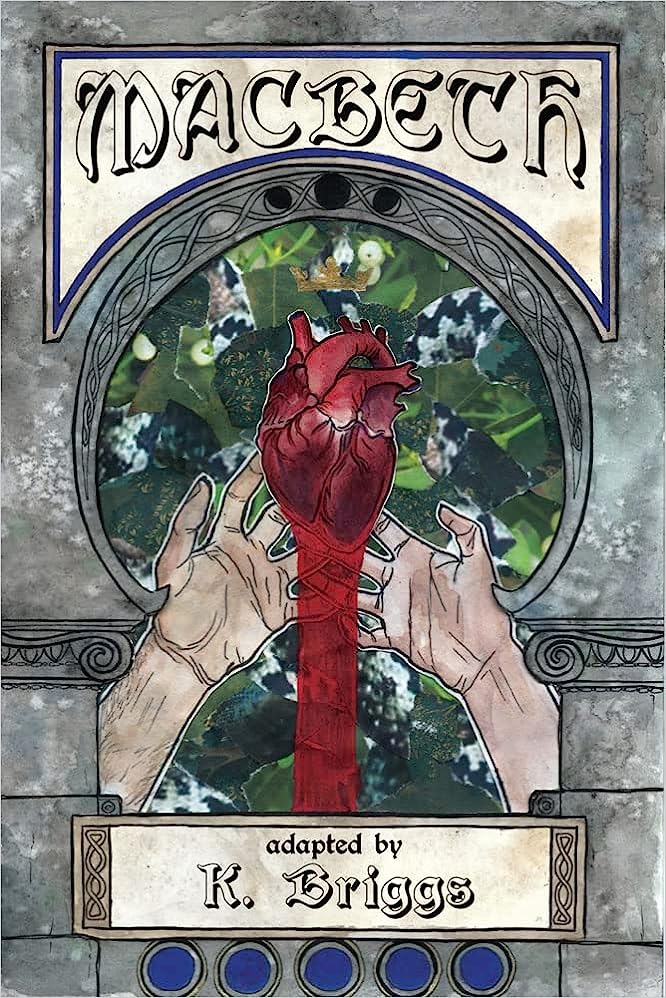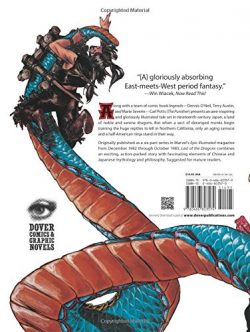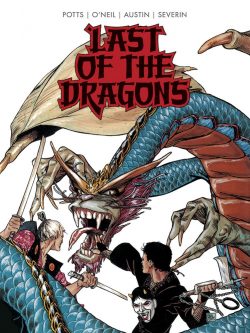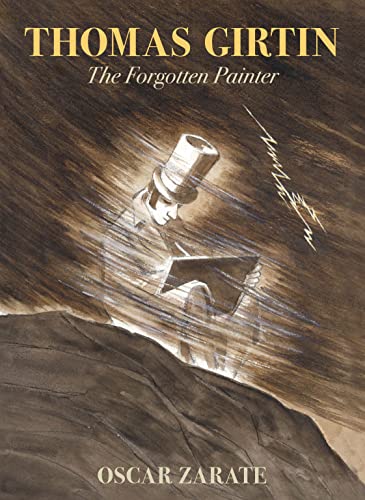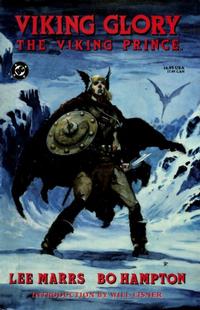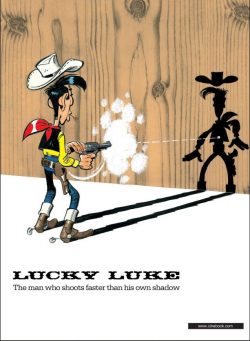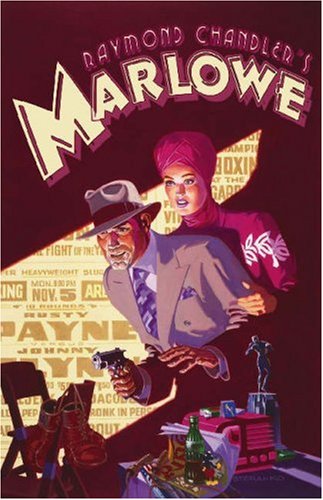
By Willy Lambil & Raoul Cauvin, translated by Jerome Saincantin (Cinebook)
ISBN: 978-1-80044-061-6 (Album PB/Digital edition)
Devised by Louis “Salvé” Salvérius & Raoul Cauvin – who scripted the first 64 volumes until retirement in 2020 – Les Tuniques Bleues (and/or Dutch-language iteration De Blauwbloezen) debuted at the end of the 1960s: created to supplant the irreplaceable Lucky Luke when that laconic maverick defected from weekly anthology Le Journal de Spirou to rival publication Pilote.
From its first sallies, the substitute strip swiftly became hugely popular: one of the most popular bande dessinée series in Europe. In case you were wondering, it is now scribed by Jose-Luis Munuera and the BeKa writing partnership and we’re up to 66 tomes…
Salvé was a cartoonist of the Gallic big-foot/big-nose humour school, and after his sudden death in 1972, successor Willy “Lambil” Lambillotte gradually adopted a more realistic – yet still overtly comedic – tone and manner. Lambil is Belgian, born in 1936 and, after studying Fine Art in college, joined publishing giant Dupuis in 1952 as a letterer.
Born in 1938, scripter Cauvin was also Belgian and – before entering Dupuis’ animation department in 1960 – studied Lithography. He soon discovered his true calling was comedy and began a glittering, prolific writing career at Le Journal de Spirou.
In addition, he scripted dozens of long-running, award winning series including Cédric, Les Femmes en Blanc and Agent 212: more than 240 separate albums. Les Tuniques Bleues sold alone has over 15 million copies… and counting. Cauvin died on August 19th 2021, but his vast legacy of barbed laughter remains.
Here, designated The Bluecoats, our long-suffering protagonists are Sergeant Cornelius Chesterfield and Corporal Blutch; worthy, honest fools in the manner of Laurel & Hardy: hapless, ill-starred US cavalrymen defending America during the War Between the States.
The original format offered single-page gags set around an Indian-plagued Wild West fort, but from second volume Du Nord au Sud, the sad-sack soldiers were situated back East, perpetually fighting in the American Civil War.
All subsequent adventures – despite often ranging far beyond the traditional environs of the sundered USA and taking in a lot of genuine and thoroughly researched history – are set within the timeframe of the Secession conflict.
Blutch is your run-of-the-mill, whinging little-man-in-the street: work-shy, mouthy, devious and ferociously critical of the army and its inept orchestrators and commanders. Ducking, diving, deserting whenever he can, he’s you or me – except at his core he’s smart, principled and even heroic… if no easier option is available.
Chesterfield is big and burly, a professional fighting man and proud career soldier of the 22nd Cavalry who passionately believes in patriotism and the esprit-de-corps of the Military. He is brave, never shirking his duty and hungry to be a medal-wearing hero. He also loves his cynical little troll of a pal. They quarrel like a married couple, fight like brothers but simply cannot agree on the point and purpose of the horrendous war they are trapped in: a situation that once more stretches their friendship to breaking point in this cunningly conceived instalment.
Coloured by Vittorio Leonardo, Les Tuniques Bleues – Bull Run was originally serialised in Le Journal de Spirou (#2558-2562) during 1987 and collected into another mega-selling album before the year was out. The 27th continental album, it was Cinebook’s 15th translated Bluecoats album.
Bull Run offers the creators’ trenchant and bitterly hilarious account of the infamous and calamitous first full clash between North and South, which took place on July 21st 1861, in Prince William County, Virginia. That was only 30 miles from national capital Washington DC, near the city of Manassas, from which the Confederates derived their own name for the debacle – the Battle of First Manassas.
A story within a story, it’s the account of what just happened as told by one who survived the debacle sharing confidences with a new recruit who can’t understand why nobody will speak of it…
Safely hidden away Blutch starts talking, telling how before any fighting began, President Lincoln’s generals gave the leader bad advice and pompous assurances, and a publicity campaign to recruit volunteers was badly administered. Moreover, the crisis fostered a festival atmosphere and civilians flocked to the proposed battleground to see the spectacle…
It was certainly impressive. The Union forces included not just American infantry, cavalry and artillery, but also many foreign contingents and brigades: Crimean Zouaves, Italian Garibaldians, Bavarians, Croats, Cossacks, Chinese and more. What a pity nobody drilled them in taking orders in English…
Still angry from being tricked into joining up, Blutch was already wary and could not bear to see the eagerness on the face of his glory-struck comrade Chesterfield. That’s why – when the call came from on high – he broke the habit of a lifetime and volunteered to join the proud few called on to serve drinks and refreshments to the spectators and upper ranks…
Already class divisions had appeared: the cavalry were expressly ordered not to speak to foot soldiers. That would prove catastrophically crucial as the battle unfolded and messages could not be passed…
Most telling of all, the Confederate forces were well-trained, well-disciplined and did not overconfidently consider the battle a foregone conclusion…
With carnage and confusion everywhere, Blutch’s deepest convictions are completely confirmed, and the jolly adventure becomes a complete rout, made all the worse for death-or-glory Chesterfield, who is ignominiously saved from capture or worse by his sneaky pal’s ungentlemanly behaviour and dirty tricks. That’s why the sergeant never talks about Bull Run…
Painfully cleaving to the bald facts of history, this episode is far darker than most, with the underlying horror leavened by a narrative distancing that allows ridiculously surreal black comedy and bitter satire to blossom constantly.
Combining pointedly seditious polemic with stunning slapstick, Bull Run mordantly manipulates the traditions of war stories to hammer home the point about the sheer stupidity of war and crushing cruelty of arrogant elitism. These yarns weaponise humour, making occasional moments of shocking verity doubly powerful and hard-hitting. Funny, thrilling, beautifully realised and eminently readable, Bluecoats is the best kind of war-story and Western: appealing to the best, not worst, of the human spirit.
© Dupuis 1987 by Lambil & Cauvin. All rights reserved. English translation © 2021 Cinebook Ltd.

